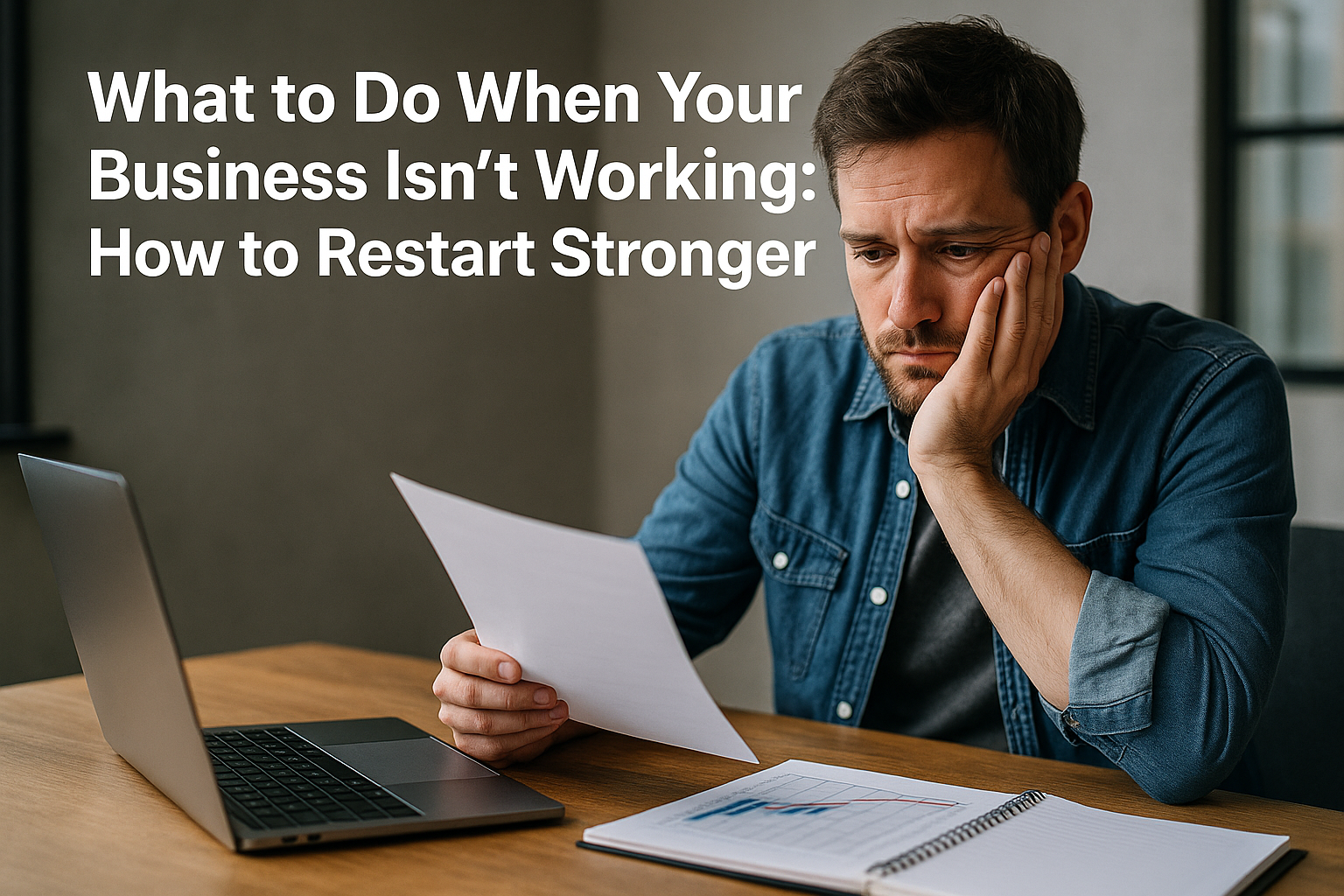Every entrepreneur dreams of building a thriving business, but the reality is that not all ventures succeed right away. Many small entrepreneurs eventually face the painful moment when they realize their business isn’t working. Sales may be too low, expenses too high, or customers simply uninterested.
The good news is that failure is not the end—it can be the beginning of something better. Some of the world’s most successful entrepreneurs built their empires after failing and restarting. This article will guide you through what to do when your business isn’t working and how to restart stronger.
Step 1: Accept and Acknowledge the Situation
The first step is honesty. Denying the problems only delays solutions. Take a clear look at your business:
- Are sales consistently below expectations?
- Do customers show little interest or engagement?
- Are your costs higher than your revenue?
Acknowledging these signs doesn’t mean giving up—it means taking control.
Step 2: Identify What Went Wrong
Understanding why your business isn’t working is crucial for improvement.
Common reasons businesses struggle include:
- Poor market research (not enough demand).
- Weak value proposition (no clear reason for customers to choose you).
- Poor financial management.
- Ineffective marketing.
- Lack of focus or consistency.
Write down the key issues you believe caused the struggles. Clarity helps you make better decisions moving forward.
Step 3: Seek Honest Feedback
Entrepreneurs sometimes overlook blind spots. Getting external feedback provides new perspectives.
Ways to collect feedback:
- Ask existing or past customers why they didn’t buy again.
- Talk to mentors, peers, or business advisors.
- Analyze online reviews or surveys if available.
Honest feedback may be hard to hear, but it reveals exactly what needs fixing.
Step 4: Evaluate the Market Again
Maybe your product or service is good, but the market is too small—or your target audience isn’t right.
Questions to ask:
- Is there still demand for this product/service?
- Am I targeting the right audience?
- Are there competitors succeeding in the same space?
If the demand is low, it may be time to pivot. If demand is strong, you may just need adjustments in positioning or marketing.
Step 5: Consider Pivoting Instead of Quitting
Restarting doesn’t always mean abandoning your business completely. Sometimes small changes can turn things around.
Examples of pivots:
- A café struggling with foot traffic starts offering delivery services.
- A fitness coach switches from in-person sessions to online training.
- A product-based business narrows focus to its best-selling item.
Pivoting helps you restart without starting from zero.
Step 6: Rebuild Your Business Plan
If you decide to restart, build a lean and simple plan with clear priorities.
Include:
- A validated value proposition.
- A clear target market.
- A pricing strategy that works.
- A lean financial plan with lower expenses.
- A focused marketing strategy.
Think of this new plan as your roadmap for a stronger comeback.
Step 7: Manage Finances Wisely
Financial mismanagement is a leading cause of failure. When restarting, focus on financial discipline.
Tips:
- Start small and scale gradually.
- Track all expenses and income closely.
- Avoid unnecessary debt in the early stages.
- Build an emergency fund for slow months.
Money management gives your business stability during its restart.
Step 8: Rebuild Your Confidence
Failure often hurts more emotionally than financially. Many entrepreneurs lose confidence after setbacks.
Ways to rebuild confidence:
- Remember that failure is part of entrepreneurship.
- Study stories of entrepreneurs who succeeded after failure.
- Focus on lessons learned, not just mistakes made.
- Celebrate small wins in your new journey.
A positive mindset is as important as a strong business plan.
Step 9: Relaunch Strategically
Don’t just restart—restart smartly.
Tips for relaunching:
- Start with a smaller audience or local community.
- Use pre-launch campaigns to build excitement.
- Offer special deals to attract first customers.
- Focus on marketing channels that gave results before.
A strong relaunch shows you’ve learned and improved.
Step 10: Stay Flexible and Keep Learning
Markets change, customer needs evolve, and strategies may need adjustments. Flexibility ensures long-term survival.
- Keep listening to customer feedback.
- Monitor trends in your industry.
- Adjust your plan when needed, but stay focused on your vision.
Flexibility is the key difference between businesses that die after failure and those that grow stronger.
Final Thoughts: Failure Is Not the End
If your business isn’t working, it doesn’t mean you’re not cut out for entrepreneurship. It means you’re gaining experience. The most successful entrepreneurs didn’t avoid failure—they used it as fuel for improvement.
By accepting reality, analyzing mistakes, seeking feedback, pivoting when needed, and restarting with a stronger plan, you can turn failure into the foundation of future success.
Remember: restarting doesn’t erase your journey—it builds on it. Every lesson you’ve learned makes you a stronger entrepreneur.
